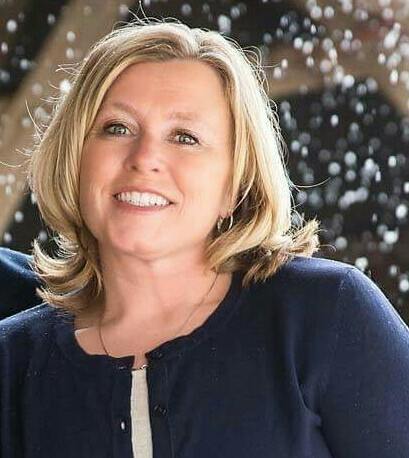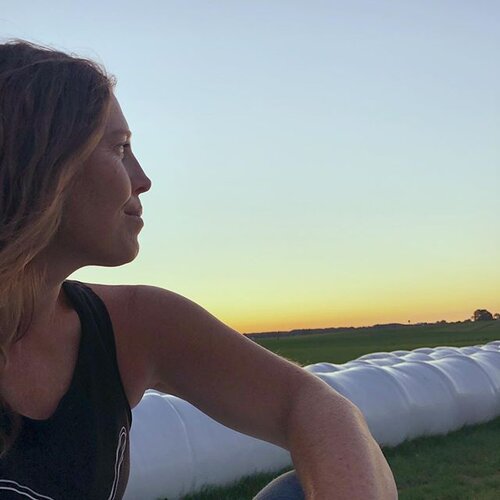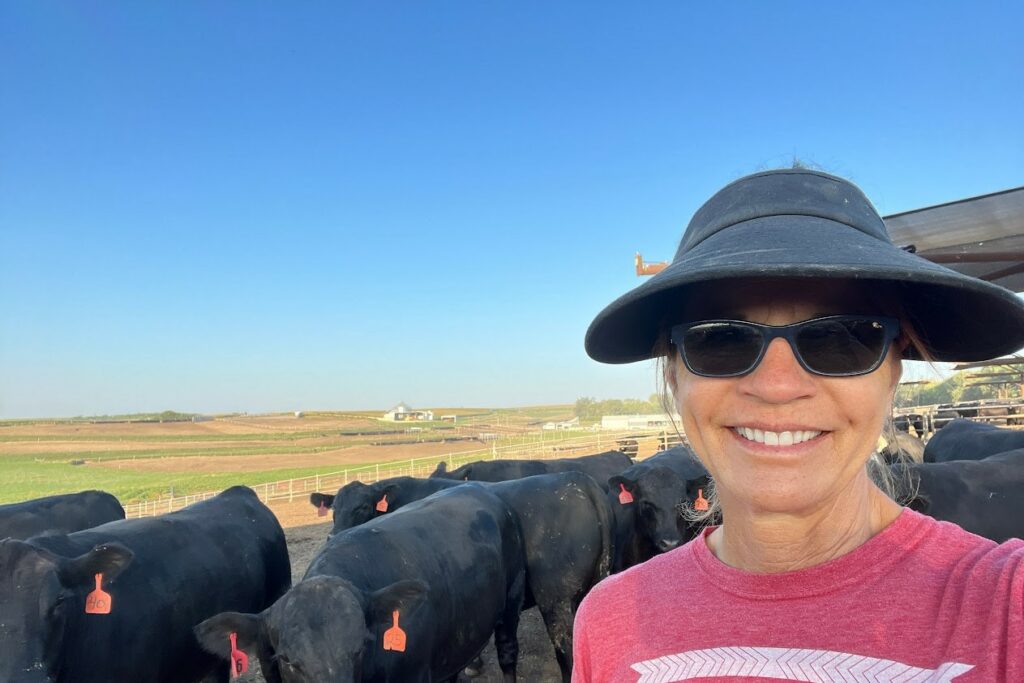Quiet Observer Kellie Blair

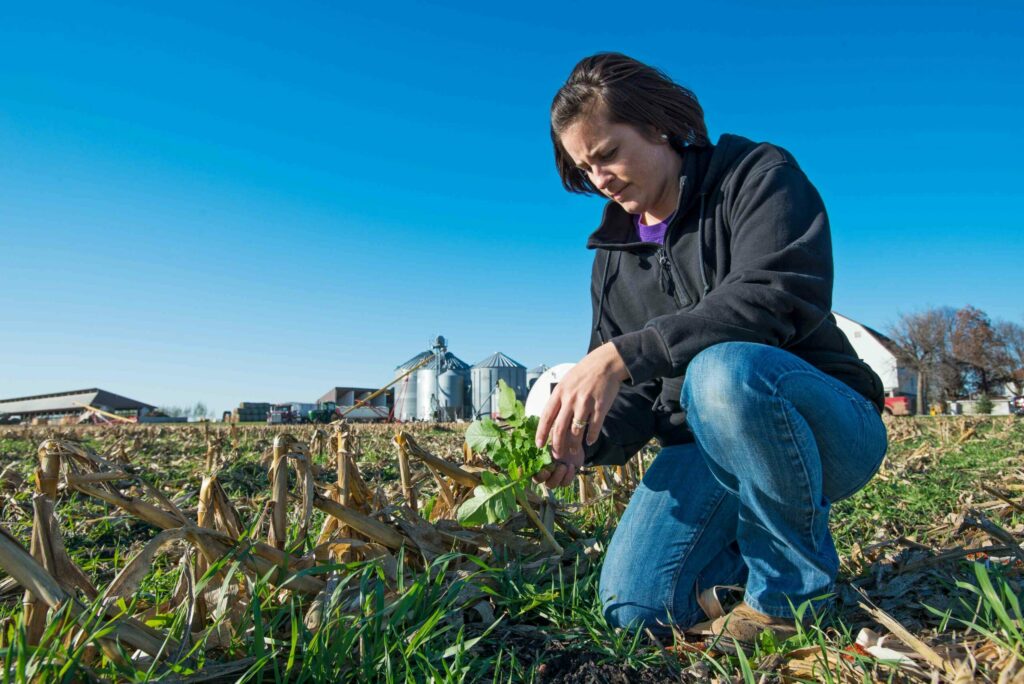
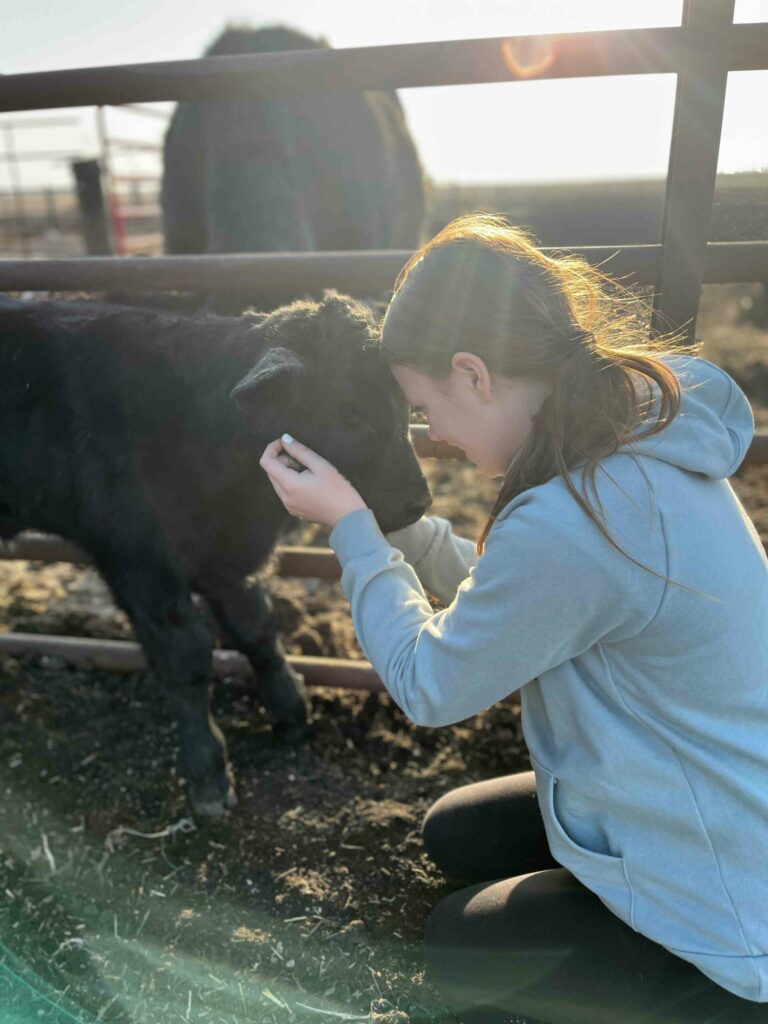
How do farmers overcome fear while helping 1,000-pound animals birth their babies? Kellie says to show up and watch quietly so you know the right time to step in.
I have mixed emotions when it comes to caring for the mamas and babies in our beef herd. The babies are my favorite! They are born in the springtime here, which means there is new life and fresh greenery showing up all around us. Once they are born, their mamas lick them to stimulate their breathing and digestion process. Then, ten minutes later, that newborn is standing up on its own and nursing. Wow. It is truly miraculous. Especially when things happen the way they are designed to go. But sometimes it doesn’t go that way. Especially with the first-time mamas. This is where the mixed emotions set in. I have a healthy fear of expecting heifers1.
I grew up on a crop and livestock farm. I studied forestry and agronomy2 in college. And I’m currently a certified crop advisor3. I feel very comfortable around pigs and plants. Yet here I am for the tenth year in a row caring for our farm’s expecting mamas and babies. These adult females weigh more than 1,000 pounds. Pair that with an animal’s fiercely protective instincts for their babies and the fact that they don’t always understand that I’m here to help and you’re likely starting to understand my frame of mind. Over time I’ve found some effective ways to make me push past these fears: I keep showing up trusting that each experience will give me confidence, and I’ve learned that quietly observing them is the best way to know when and how to step in. In addition, we try to breed and purchase the ones that are more calm and handle most of their laboring on their own.

You might expect a farmer’s chores to always be hard, back-breaking work. Sometimes that’s true. But one of the most effective and helpful chores I do when caring for these cattle is to sit and watch. The ones who are pregnant with their first calf are the ones who tend to have the most trouble with birthing. I can relate. When I had my first child, the labor experience was not what I expected. I asked for help a little later than I would the next time, which made my first child’s exit a bit exciting. Then I was exhausted by the time he was in my arms. This part of motherhood is so similar for cattle. It’s better for us to help them earlier on in the process than later because it impacts their first feeding, which is a tricky but important step.
We keep the pregnant heifers separated from the rest of the herd on our farm, and as a result I can more easily notice when they go into labor. Just this morning while I was watching, one heifer in particular was laboring for a long time and seemed like she could use some help. She was a trooper. We put her in a calving pen , which we use to lower stress and keep the animal calm. Then we carefully went to work. Calves are typically born head-first with their front feet extended. We took hold of the hooves and pulled to help get the calf out safely. This is what farmers call, “pulling a calf.” Once we pulled the calf, I stuck around to watch and even helped the baby find the teat while the mama trustingly allowed it. I’m happy to report that both are doing great.
1 Heifer: A young female cow that has not borne a calf.
2 Agronomy: The science of soil management and crop production.
3 Certified Crop Advisor: An expert who helps farmers with field and crop management, spring and fall soil bed management and seeding and fertility management.
